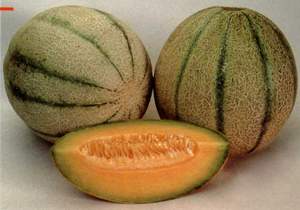FDA investigators have released a report of an environmental assessment of Jensen Farms following an outbreak of Listeria that has led to 25 deaths and 123 illnesses. Investigators visited the farm in mid-September and collected 39 environmental samples (swabs of equipment and sites where Listeria may harbor). According to the report 13 of those samples were confirmed positive for Listeria with a PFGE pattern that matched three of the four outbreak strains that had been collected from victims.
While investigators did not find any of the outbreak strains in any of Jensen Farms’ cantaloupe fields, they did not rule out the possibility that low level contamination from the field could have been introduced into their packing system. And that packing system could have spread the contamination around and provided a good environment for further growth of the pathogen. Sounds analogous to a 2006 spinach-linked E. coli O157 outbreak investigation where pathogens could be spread around during washing/processing.
The report points to three areas of concern, all associated with the packing facility, that were likely contributing factors in the outbreak: Facility layout, equipment design and handling practices.
1. Facility Design
Certain aspects of the packing facility, including the location of a refrigeration unit drain line, allowed for water to pool on the packing facility floor in areas adjacent to packing facility equipment. Wet environments are known to be potential reservoirs for Listeria monocytogenes and the pooling of water in close proximity to packing equipment, including conveyors, may have extended and spread the pathogen to food contact surfaces. Samples collected from areas where pooled water had gathered tested positive for an outbreak strain of Listeria monocytogenes.
Further, [a not easily cleaned] packing facility floor where water pooled was directly under the packing facility equipment from which FDA collected environmental samples that tested positive for Listeria monocytogenes with PFGE pattern combinations that were indistinguishable from outbreak strains.
Another potential means for introduction of Listeria monocytogenes contamination into the packing facility was a truck used to haul culled cantaloupe to a cattle operation. This truck traveled to and from a cattle operation and was parked adjacent to the packing facility where contamination may have been tracked via personnel or equipment, or through other means into the packing facility.
2. Equipment Design
In July 2011, the firm purchased and installed equipment for its packing facility that had been previously used at a firm producing a different raw agricultural commodity [which one? -ben AP says it was potatoes].The design of the packing facility equipment, including equipment used to wash and dry the cantaloupe, did not lend itself to be easily or routinely cleaned and sanitized. Several areas on both the washing and drying equipment appeared to be un-cleanable, and dirt and product buildup was visible on some areas of the equipment, even after it had been disassembled, cleaned, and sanitized.
The design of the packing facility equipment, especially that it was not easily amenable to cleaning and sanitizing and that it contained visible product buildup, is a factor that likely contributed to the introduction, growth, or spread of Listeria monocytogenes.
3. Postharvest Practices
In addition, free moisture or increased water activity of the cantaloupe rind from postharvest washing procedures may have facilitated Listeria monocytogenes survival and growth. After harvest, the cantaloupes were placed in cold storage. The cantaloupes were not pre-cooled to remove field heat before cold storage. Warm fruit with field heat potentially created conditions that would allow the formation of condensation, which is an environment ideal for Listeria monocytogenes growth.
The combined factors of the availability of nutrients on the cantaloupe rind, increased rind water activity, and lack of pre-cooling before cold storage may have provided ideal conditions for Listeria monocytogenes to grow and outcompete background microflora during cold storage. Samples of cantaloupe collected from refrigerated cold storage tested positive for Listeria monocytogenes with PFGE pattern combinations that were indistinguishable from two of the four outbreak strains.
